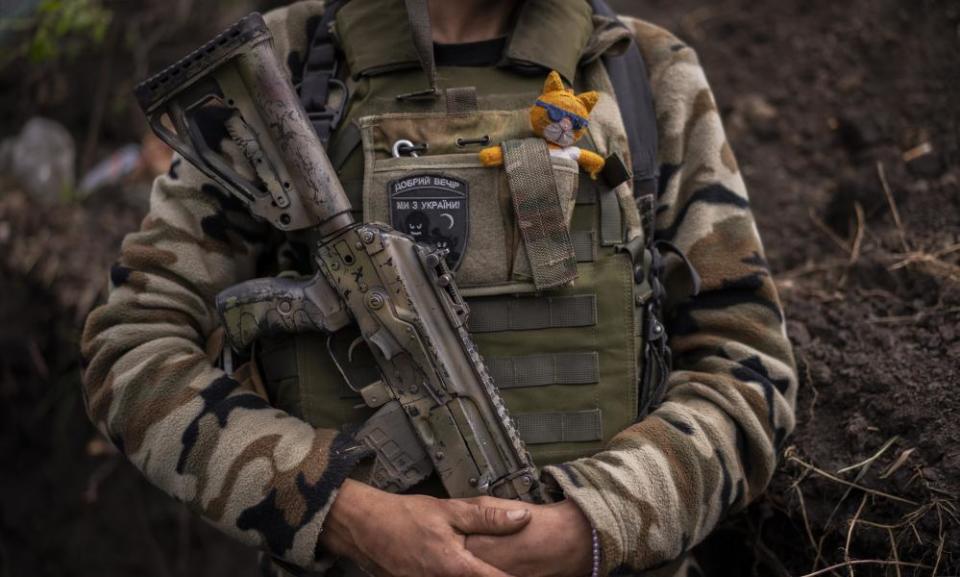Ukraine forces prepare for possible attack on Belarusian border

Ukrainian forces have built a new line of defences along the country’s previously unfortified northern border with Belarus amid signs of another attack.
Russian forces invaded Ukraine through the Belarusian border in February when they tried to capture the capital, Kyiv.
On 10 May, Belarus’s army chief, Viktor Gulevich, announced the deployment of Belarusian special forces and equipment in response to what he described as a “southern threat” from Ukraine and Nato. Belarus has been conducting military drills its border with Ukraine since early May.
Belarusian President, Aleksandr Lukashenko, has been Russia’s closest ally in its war in Ukraine. On Tuesday, Lukashenko urged the Russian-led military alliance, the Collective Security Treaty Organisation, which met in Moscow, to remain united on Ukraine and accused the west of prolonging the conflict.
The Guardian was given access to Ukraine’s border positions on the condition that it did not disclose the exact locations or the surnames of the Ukrainians serving.
In the forests along the Belarusian border, a Ukrainian territorial defence unit made up of fighters between the ages of 19 and the mid-60s, is manning a network of trenches and positions constructed since the February invasion.
Before February, much of Ukraine’s border with Belarus consisted of small kiosk-like checkpoints which Russian tanks broke through with ease. Two days after the invasion, Ukraine closed all its border crossings with Belarus and Russia.
In their analysis of the threat from Belarus, the UK’s Ministry of Defence said last week that the presence of Belarusian forces on the border would probably prevent Ukraine from deploying support operations on its Donbas front.

Armed with AK47s and a few dozen men per position, the fighters hope the Belarusian border will not be used by invading forces again.
“We’ll be in the frying pan,” joked Vova, a man who volunteered to fight in the Donbas in 2014 and was in the Soviet army. Vova signed up to fight alongside his brother, Ihor, and his brother’s son, Maksym, on the second day of the war.
“They took the first 500 men in the queue that day, but there were over 800 of us,” said Ihor, sat between his brother and son at the makeshift barracks near the border.
“I’ve got hypertension, he’s got hypertension, he’s on insulin,” said Ihor, pointing around the room at the middle-aged and pension-aged men. “And then the other part of the unit is younger guys like Maksym.”
Ihor and Maksym were working on a construction site in Kyiv on the morning of the invasion. They rushed back to the Zhytomyr region, where their family live, to sign up. Territorial defence units in Ukraine are made up of people who fight in the same region as where they live.
The men and a few women in the unit said some of them knew each other from before the war. In almost every other case, there is only a few degrees of separation.
“In some cases, it was like, ‘Oh, your grandmother knows my grandfather, maybe we’re brothers’,” said Ihor, who added that fighting among people from his own region gave him a great sense of duty and motivation. Sign up to First Edition, our free daily newsletter – every weekday morning at 7am BST
The unit said they do not have the back up of heavy artillery units, but that they were fortunate to have local geography on their side. The miles-long narrow roads that lead down from the border are surrounded by thick forests which cover the deep, swampy ground.
“No one has ever managed to hold this territory for that reason,” said Ihor, the unit’s military press secretary, speaking about battles around the northern border during the second world war.

 Yahoo Finance
Yahoo Finance 